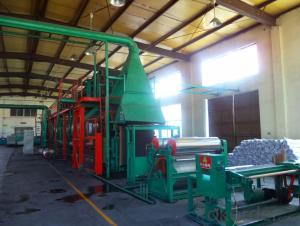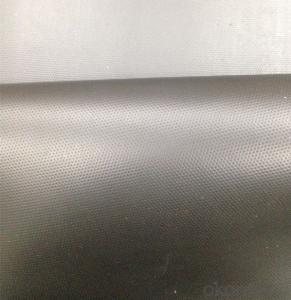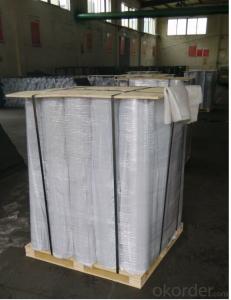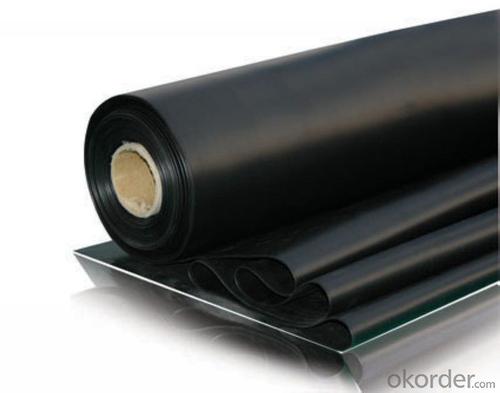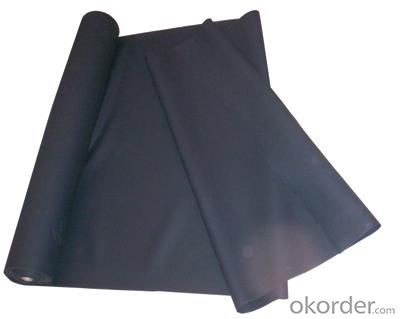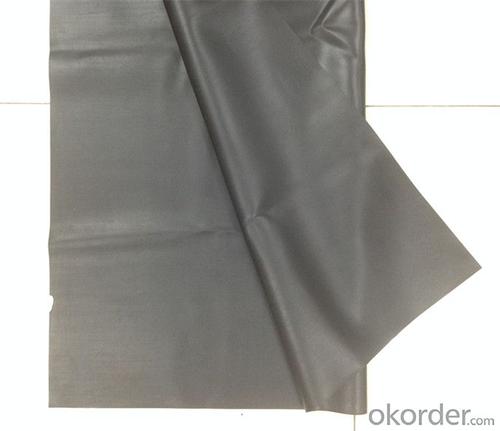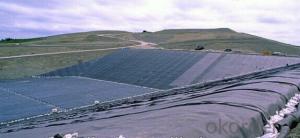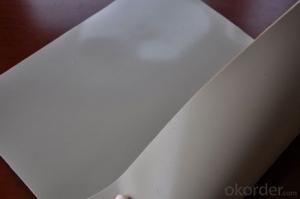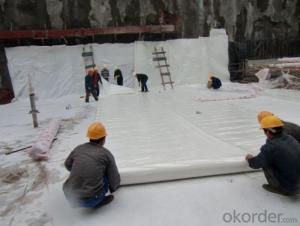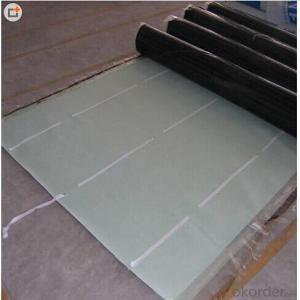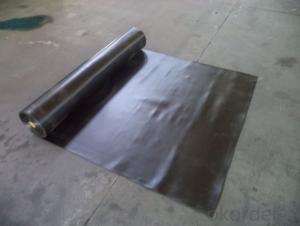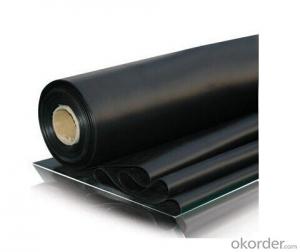EPDM Rubber Waterproof Membrane 1.2mm, 1.5mm, 2mm CMAX
- Loading Port:
- Qingdao
- Payment Terms:
- TT OR LC
- Min Order Qty:
- 4000 m²
- Supply Capability:
- 200000 m²/month
OKorder Service Pledge
OKorder Financial Service
You Might Also Like
EPDM Rubber Waterproof Membrane
Product Instruction:
EPDM waterproof membrane is made from ternary ethylene-propylene rubber,which is designed for waterproofing of exposed and non-exposed applications. EPDM waterproof membrane is of high elasticity among high polymer waterproof materials and becomes a world-popular waterproofing material.
CNBM own the wold-advanced equipment of cold feeding extrusion and continuous vulcanization technology. With the best performance among high polymer waterproof materials, EPDM is of exceptional elasticity and will not split or cracked under normal building movement.
Product Features:
-Excellent weather-ability, durability and size stability
-Good adaptability to high and low temperature, UV resistant and anti-corrosion
-High tensile strength and good elongation, accommodating to structure movement
-Easy installation, solid joint, and mo environmental pollution
-Good rooting penetration resistance
-Service life up to 50 years
Applications:
-Roof, basement, tunnel, pond liner, dam
-Industrial and civil building waterproofing
-Geosynthetic liner for fish ponds, swimming pools, channels, irrigation system
-Especially suitable for projects with high requirement in durability, anti-corrosion and deformation
Specifications:
-Width of roll: 1.2m, 2m, 4m
-Length of roll: 20m, 30m or customized
-Thickness of membrane: 1.2mm, 1.5mm, 2mm
-Type: vulcanized EPDM or welding EPDM
-Application: roof, basement, pond, lake, swimming pool, steel structure roofing, underground, tunnel, etc
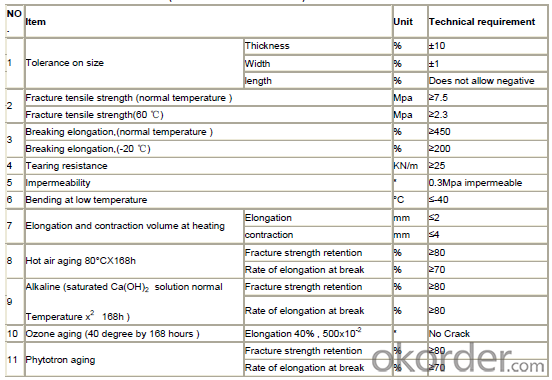
FAQ:
1. Is your EPDM waterproof membrane the real rubber?
Yes, our EPDM membrane is made from top quality rubber, which is imported from America. We support samples for testing, or testing in our factory.
2. How's your products quality?
Our EPDM is with the top quality at home and abroad. Our quality is much higher than Chinese standard. Our product is widely used in Chinese Central government projects. And it's also accpted by customers all over the world, such as EU, USA, Astrulia, etc.
3. What's the service life of your EPDM membrane?
The service life of our EPDM membrane is more than 50 years.
4.What's your MOQ?
Our MOQ is 3000M2.
5. What's your product ability of EPDM membrane?
We own the largest EPDM production line in China. Our product ability of EPDM membrane reaches 2 million square meter per year.
Photos:
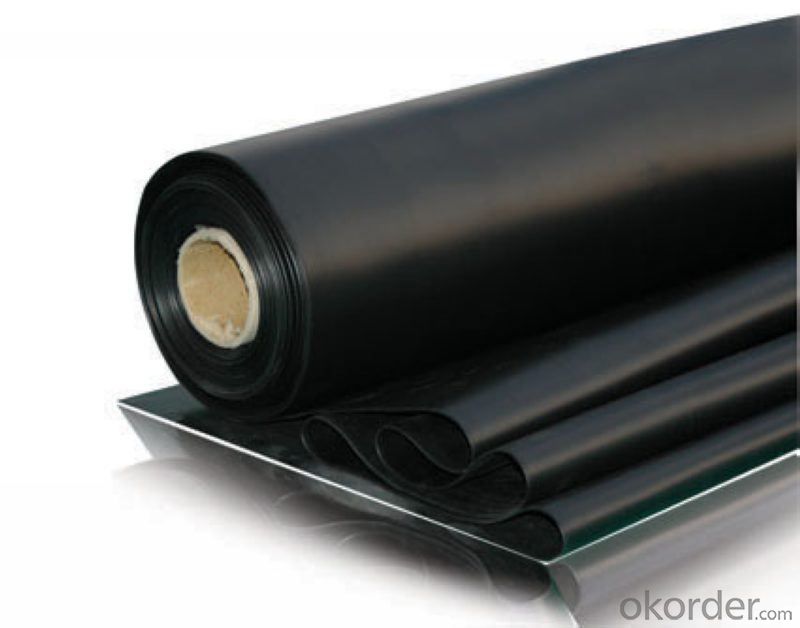
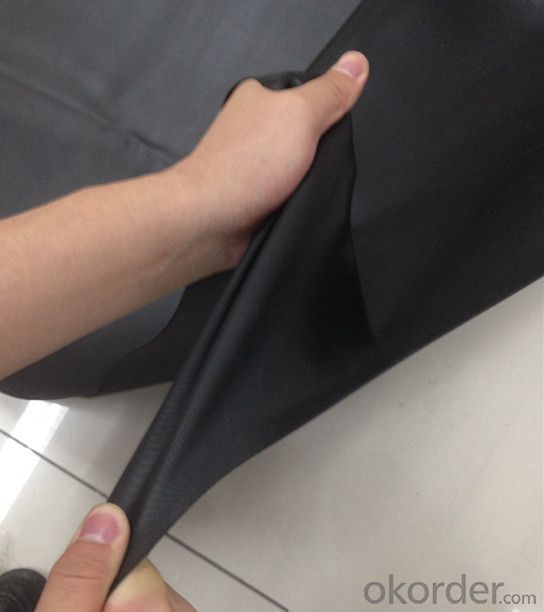


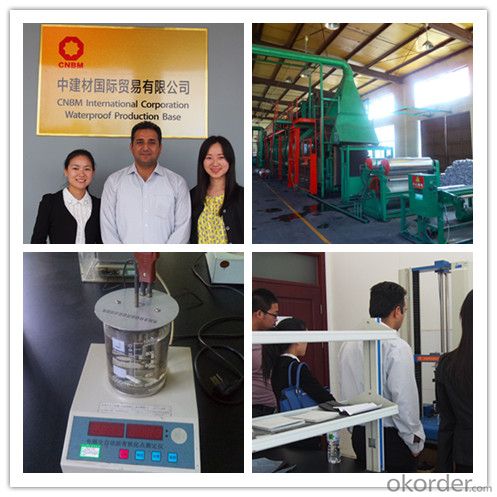
- Q: Is a waterproofing membrane resistant to hydrostatic pressure?
- Yes, a waterproofing membrane is resistant to hydrostatic pressure. A waterproofing membrane is designed to create a barrier against water and prevent it from penetrating through the foundation or structure. It is specifically engineered to withstand and resist the pressure exerted by water in soil or other external sources. This resistance to hydrostatic pressure is achieved through the use of durable and impermeable materials, such as rubberized asphalt or polyethylene, that are able to withstand the force of water pushing against them. The membrane is also installed in such a way that it creates a continuous and seamless layer, further enhancing its ability to resist hydrostatic pressure. Overall, a properly installed waterproofing membrane can effectively protect a structure from water intrusion, even under significant hydrostatic pressure.
- Q: Can a waterproofing membrane be used for elevator shafts and stairwells?
- Elevator shafts and stairwells, being susceptible to moisture and water infiltration, can indeed benefit from the use of a waterproofing membrane. Particularly in below-grade or high-moisture environments, these areas are prone to such issues. The purpose of waterproofing membranes is to create a barrier that prevents water from penetrating and causing damage to the structure. When properly applied, a waterproofing membrane can effectively safeguard elevator shafts and stairwells, ensuring they remain dry and free from problems associated with water, such as mold growth, material deterioration, and structural damage. These membranes are typically constructed using durable materials like modified bitumen, PVC, or rubberized asphalt, which possess excellent waterproofing qualities. It is crucial to select a waterproofing membrane specifically designed for below-grade or high-moisture applications. These membranes should possess high resistance to hydrostatic pressure, the ability to bridge cracks, and long-term durability to withstand constant exposure to moisture. Moreover, it is important to have trained professionals with expertise in waterproofing systems handle the installation of the membrane in elevator shafts and stairwells. This will guarantee correct installation, resulting in an effective barrier against water infiltration. In conclusion, a waterproofing membrane is a suitable solution for elevator shafts and stairwells, providing effective protection against water penetration and related moisture issues.
- Q: Does a waterproofing membrane require any special tools for installation?
- Yes, installing a waterproofing membrane typically requires a few special tools. These tools may include a utility knife or scissors to cut the membrane to size, a trowel or notched trowel to spread the adhesive or mortar, a roller or squeegee to ensure proper adhesion, a brush or sprayer for applying any necessary primers or sealants, and a heat gun or torch for activating the self-adhesive membranes. Additionally, depending on the specific installation method and membrane type, other tools such as a nail gun, stapler, or specialized membrane fasteners may be required. It is important to consult the manufacturer's installation guidelines and recommendations to determine the exact tools needed for a specific waterproofing membrane.
- Q: Can a waterproofing membrane be used in tunnels?
- Yes, a waterproofing membrane can be used in tunnels. Waterproofing membranes are commonly used in tunnels to prevent water ingress and protect the structure from water damage. These membranes are typically made from materials such as bitumen, PVC, or polyurethane, which are designed to be impermeable to water. When applied correctly, a waterproofing membrane can provide an effective barrier against water infiltration, helping to maintain the integrity of the tunnel and prevent costly structural damage. Additionally, waterproofing membranes can also provide protection against other elements, such as chemicals and gases, making them a versatile solution for tunnel construction and maintenance.
- Q: Can a waterproofing membrane be applied to existing structures or is it only suitable for new construction?
- A waterproofing membrane has the capability to be applied to both existing structures and new construction. These membranes are specifically designed to create a barrier against water infiltration, making them suitable for preventing water damage in various areas such as roofs, basements, and foundations. Whether it is an aged building or a recently constructed one, the application of a waterproofing membrane can effectively maintain the dryness of the structure and prevent problems associated with moisture, such as leaks, seepage, and mold growth. However, when applying a waterproofing membrane to an existing structure, it may be necessary to undertake additional preparation and surface treatment in order to ensure proper adhesion and efficiency. It is strongly advised to seek the guidance of an experienced waterproofing contractor who can evaluate the specific requirements of the structure and provide suitable solutions.
- Q: Can a waterproofing membrane be used for power plants?
- Indeed, power plants can make use of waterproofing membranes. Waterproofing membranes find widespread use in various settings where the prevention of water penetration is essential, and power plants are no exception to this. Within power plants, there are often sections that come into contact with water, such as cooling towers, wet flue gas desulfurization systems, and other water management systems. Incorporating waterproofing membranes within these areas aids in safeguarding the structures and equipment against water damage, corrosion, and leaks. Furthermore, underground structures like basements or tunnels, which are frequently present in power plants, can also benefit from the application of waterproofing membranes. These membranes act as a reliable barrier against water infiltration, thereby ensuring the durability and longevity of the power plant structures. Consequently, the utilization of a waterproofing membrane emerges as a practical and advantageous solution for maintaining the performance and dependability of power plant facilities.
- Q: Can a waterproofing membrane be used on precast gypsum surfaces?
- Yes, a waterproofing membrane can be used on precast gypsum surfaces. Precast gypsum surfaces are often used in construction for walls, ceilings, and other building components. These surfaces are typically porous and can be susceptible to water damage if not properly protected. A waterproofing membrane is a barrier that is applied to the surface of the precast gypsum to prevent water infiltration. It acts as a protective layer, preventing water from seeping into the gypsum and causing damage such as mold growth or deterioration. There are various types of waterproofing membranes available in the market, including liquid-applied membranes, sheet membranes, and cementitious coatings. These membranes are designed to adhere to different types of surfaces, including precast gypsum. When using a waterproofing membrane on precast gypsum surfaces, it is important to ensure that the surface is clean and free from any contaminants that may interfere with the adhesion of the membrane. The membrane should be applied according to the manufacturer's instructions, taking into consideration factors such as temperature, humidity, and drying time. In conclusion, yes, a waterproofing membrane can be used on precast gypsum surfaces to protect them from water damage. It is essential to choose the right type of membrane and follow proper application techniques to ensure effective protection.
- Q: How does a waterproofing membrane handle movement or settling of a building?
- A waterproofing membrane is designed to accommodate movement or settling of a building in a few different ways. Firstly, it is typically installed in such a way that it can stretch or flex as the building moves. This elasticity allows the membrane to remain intact and continue to provide a watertight seal even as the structure shifts or settles. Additionally, waterproofing membranes often incorporate reinforcement materials, such as fabrics or fibers, which enhance their ability to withstand movement. These reinforcements help distribute the stress or strain caused by building movement across a larger area, reducing the risk of tears or failures in the membrane. Furthermore, some waterproofing membranes are designed with built-in features that can accommodate significant movement. For example, certain membranes may have special "crack-bridging" properties, which allow them to span small cracks that may develop in the building's substrate due to settling. This ensures that the membrane remains effective even if the structure experiences minor damage. In cases where a building is expected to undergo significant movement or settling, specialized waterproofing systems, such as joint sealants or expansion joints, may be used in combination with the membrane. These systems are specifically designed to handle large or dynamic movements, providing additional protection against water infiltration. Overall, a waterproofing membrane is carefully designed and installed to handle the movement or settling of a building. Its elasticity, reinforcement materials, and additional features allow it to remain effective in maintaining a watertight seal, even in the face of structural shifts or settlement.
- Q: Can a waterproofing membrane be used on precast stone block surfaces?
- Precast stone block surfaces can benefit from the application of a waterproofing membrane. These membranes are frequently utilized to safeguard a variety of surfaces, including precast stone blocks, from water infiltration and moisture harm. The purpose of these membranes is to establish a barrier that prevents water from seeping into the surface and causing problems like mold, decay, or structural deterioration. By applying a waterproofing membrane to precast stone block surfaces, their durability and lifespan can be improved by shielding them from water-related difficulties. However, it is crucial to diligently adhere to the manufacturer's instructions and ensure that the chosen waterproofing membrane is appropriate for the specific type of precast stone block surface being treated.
- Q: Can a waterproofing membrane be used for a stadium roof structure?
- Yes, a waterproofing membrane can be used for a stadium roof structure. It provides a protective layer that prevents water from entering the structure and causing damage. This is especially important for stadiums as they are exposed to various weather conditions. Using a waterproofing membrane ensures the longevity and durability of the roof, protecting both the stadium and its occupants.
Send your message to us
EPDM Rubber Waterproof Membrane 1.2mm, 1.5mm, 2mm CMAX
- Loading Port:
- Qingdao
- Payment Terms:
- TT OR LC
- Min Order Qty:
- 4000 m²
- Supply Capability:
- 200000 m²/month
OKorder Service Pledge
OKorder Financial Service
Similar products
Hot products
Hot Searches
Related keywords

